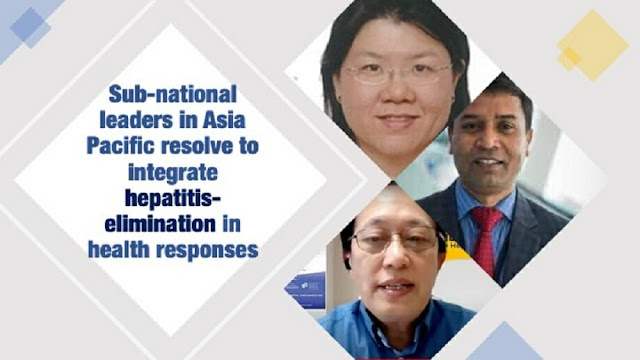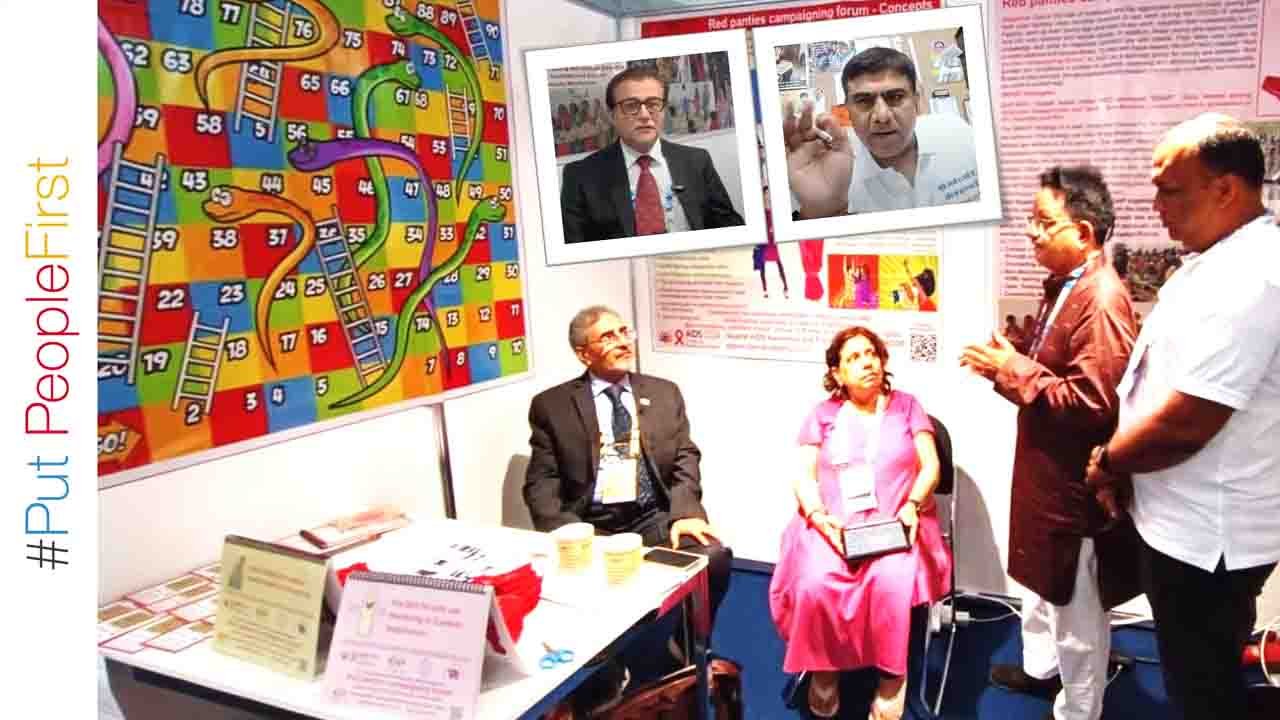Health
Think twice: Can we deliver on #HealthForAll without saving lives from viral hepatitis?
Think twice: Can we deliver on #HealthForAll without saving lives from viral hepatitis?
Despite over 350 million people living with hepatitis B and C virus globally, and 3 persons dying every minute, much-needed efforts are yet to be on-track to end viral hepatitis in next 108 months (by 2030) as promised by heads of all countries in UN General Assembly (by adopting the Sustainable Development Goals). More importantly, during the Covid pandemic, efforts to prevent and save lives from viral hepatitis had taken a backseat – which is risking losing the gains made earlier in addressing viral hepatitis across the world.
“Elimination of viral hepatitis should be part of any sound public health agenda. With a strong political will and collective leadership we can achieve the regional goal of eliminating viral hepatitis by 2030” said Wangsheng Li, cofounder and founding President of The Hepatitis Fund (endHep2030.org).
He was speaking at the 6th Asia Pacific Summit of Mayors (APCAT Summit) which brought together subnational leaders of almost 80 cities across the region. Addressing viral hepatitis was an important part of the integrated health and development agenda of this summit. The Mayors and other subnational leaders and delegates of APCAT Summit adopted an APCAT Declaration 2021 which includes the promise for “addressing the challenge of viral hepatitis as a major public health threat in the Asia Pacific region through elimination of mother to child transmission by raising public awareness and strengthening health systems through public and private partnerships.”
The Declaration endorsed by 6th APCAT Summit further underlines: “We commit to doing everything to harness the power of our city governments to ensure that tobacco control, prevention of non-communicable diseases, TB control, elimination of viral hepatitis, routine immunization and scaling up Covid vaccination are effectively implemented and measured, along with other health and development initiatives, and the recovery from Covid is healthy, equitable and sustainable.”
“We are very excited on the recently formed partnership between EndHep2030 and APCAT” said Wangsheng Li. Rightly so, given how critical is political leadership to advancing ending hepatitis agenda.
“Health is a political choice that should ensure leadership, accountability and sustainability for the effective implementation of public health policies and programmes and prevent current and future pandemics. Viral hepatitis is an essential part of the #HealthForAll agenda”, said Dr Tara Singh Bam, Asia Pacific Director of the International Union Against Tuberculosis and Lung Disease (The Union), and Board Director of Asia Pacific Cities Alliance for Health and Development (APCAT) in Singapore.
How will we end hepatitis by 2030?
Dr Po-Lin Chan from Manila-based World Health Organization (WHO)’s Western Pacific regional office said that “Elimination of viral hepatitis as a public health threat by 2030 is a combination of existing interventions at scale. These include ensuring universal free childhood vaccinations of 3 doses of hepatitis B vaccines, prevention of mother to child transmission of hepatitis during antenatal care, ensuring safe blood and blood products (so that transfusions are safe), making sure universal precautions is the norm in healthcare settings, ensuring safer sex programmes are in place, ensuring harm reduction interventions and efforts to prevent new infections among people who inject drugs are in place and accessible, and making sure that tests and affordable drugs are available in healthcare facilities nearer to where people live.”
Along with Singapore, other countries like Bangladesh, Bhutan, Thailand, Malaysia, and Nepal have also successfully met the WHO target for 2020 of achieving 90% prevention of hepatitis B through vaccination (by providing birth dose of hepatitis B vaccine to newborn children).
“Vaccination is the foundation of prevention of hepatitis B virus (HBV)” said Dr Po-Lin Chan.
Asia Pacific is home to more than half of world’s people with hepatitis B and C
Asia and the Pacific has more than half of world’s total number of people with hepatitis B and C virus. About 200 million people are chronically infected with hepatitis (180 million with hepatitis B and 20 million with hepatitis C) and most people are not even aware that they are infected, said Dr Po-Lin Chan of WHO. These are the people who are also at high risk of developing liver cancer. Chronic infection of hepatitis B and C affects the liver overtime and causes cirrhosis and eventually liver cancer. All these premature deaths are untimely and so preventable, because we have prevention tools, as well as good tests and drugs that can treat hepatitis B and C, and hepatitis C can be cured.
Globally, 296 million people are estimated to be infected with Hepatitis B Virus (HBV), and 58 million with Hepatitis C Virus (HCV).
African region has 82 million people with hepatitis B virus (HBV) and 9 million with hepatitis C virus (HCV). Pan-American region has 5 million people each with HBV and HCV. Southeast Asian region has 60 million people with HBV and 10 million with HCV, and accounts for around 15% of global HBV and HCV cases, as well as 30% deaths due to HBV and HCV. European region has 14 million people with HBV and 12 million with HCV. Eastern Mediterranean region has 18 million people with HBV and 12 million people with HCV. Western Pacific region has 116 million people with HBV and 10 million with HCV.
Dr Po-Lin Chan shared that latest scientific evidence shows that there is a group of pregnant women who are more at risk of passing the hepatitis B virus to their babies. These are pregnant women who are themselves hepatitis B infected. WHO guidelines provide recommendations that we can further prevent hepatitis B transmission from an infected pregnant woman to her baby. Universal testing during antenatal care for HIV, HBV and syphilis, is the entry point to get infected woman timely into the care she needs. WHO’s framework for triple elimination of mother to child transmission of HIV, syphilis and HBV brings together integrated mother to child care so that next new generation of babies can be free of infectious diseases such as HIV, syphilis and hepatitis B.
Act today to prevent liver cancer tomorrow
“If we take action today, we can prevent liver cancer tomorrow. To reduce liver cancer and to reduce advanced liver disease such as cirrhosis, an effective way is to provide testing services so that people can know their own hepatitis status, can get linked to health services and get drugs to treat hepatitis. Even during the pandemic we must intensify our efforts to prevent our babies from getting infected with viral hepatitis B. This means investing in childhood vaccination (against HBV), and prevention of mother to child transmission to get to elimination” said Dr Po-Lin Chan.
People living with hepatitis B and C are at high risk of developing liver cancer. Most are not aware. But liver cancer can be prevented by ensuring testing and treatment for those who need it. Because cancer once developed will cost all of us even more.
“Hepatitis C can be cured. Hepatitis B can be effectively treated. We need to work towards strengthening health systems, towards universal health coverage which includes hepatitis, optimising primary care service delivery nearer to places where people live, including public private partnership, equitable access including hard to reach groups and engaging communities, and data based decision making” said Dr Po-Lin Chan.
Almost all countries in southeast Asia have now developed and are implementing national strategic plans that provide key guidance on hepatitis testing and treatment and blood and injection safety. All southeast Asian countries have at least 3 doses of hepatitis B vaccine in their national immunization schedule with the region achieving more than 90% coverage rate in 8 countries.
We have to scale up genuine and effective hepatitis-interventions for supporting key populations through community outreach and by implementing opioid substitution therapy and safe injection programmes.
For eliminating mother to child transmission of hepatitis B, it is essential to ensure that all pregnant women are tested for the virus and where necessary treated and for every newborn to receive the hepatitis B birth dose.
Shobha Shukla, Bobby Ramakant – CNS (Citizen News Service)
(Shobha Shukla and Bobby Ramakant both are part of editorial team of CNS (Citizen News Service), and founding board members of Asia Pacific Media Alliance for Health and Development. Follow them on Twitter @Shobha1Shukla, @BobbyRamakant)



